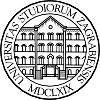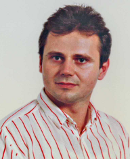


- born
- June 13, 1962
- Zagreb, Croatia
- diplomas
- June 1985, Applied maths & mechanics
- Homogenisation of elliptic and heat equations with rapidly changing coefficients (advisor: Ibrahim Aganović)
- Feb 1986, Algebra & analysis (teaching degree)
- Physics study incomplete (a completely separate study)
- magister scientiæ
- January 1988, Zagreb
- Homogenisation in fluid mechanics (advisor: Ibrahim Aganović)
- (variational methods, Gamma-convergence)
- philosophiæ doctor
- April 1992, Carnegie Mellon University, Pittsburgh, USA
- On some questions related to memory effects in homogenisation and propagation of singularities (advisor: Luc Tartar)
- (advisory committee: Victor J. Mizel, Morton E. Gurtin, Patrick Gérard)
- 1992/93
- assistant professor at Seton Hill University, Greensburg, Pennsylvania
- Nov 1993
- returned to Zagreb, to Maths Dept of Faculty of Science
- 1999/2000
- visiting scientist at Max-Planck Institute for Mathematics in the Sciences, Leipzig (invited by Stefan Müller)
- 2001
- associate professor
- 2007
- full professor
My research is directed towards development and application of mathematical objects for study of oscillating solutions of partial differential equations and systems, in particular those coming from the continuum mechanics. For physical effects which are described precisely at the microscopic level it is important to understand what are the equations satisfied at the macroscopic scale. Known mathematical models are mainly based on various notions of weak convergence. Questions known as homogenisation are connected to the properties of mixtures of two or more materials. The goal is to determine the precise bounds for qualitative physical parameters of mixtures (effective coefficients), and whether the properties of mixtures obey the same type of physical law as the properties of components (which is not the case for memory effects). The second set of questions is related to the calculus of variations: nonconvex optimisation and microstructures, with intended description of nonlinear elastic and magnetic materials, as well as connected questions of optimal design. The third aspect concerns hyperbolic conservation laws and admissibility conditions for shocks; as well as the propagation and interreaction of singularities (oscillations). The microlocal analysis (H-measures) is being used as a tool here. The fourth aspect is the adequacy of mentioned methods for questions of turbulence in fluids and statistical mechanics. Of particular interest are the applications to Boltzmann's equation, as well as the limit to empirical models of fluid mechanics and equations for plasma. Practical computation of coefficients in specific applications is of particular importance. The computers are being used for that. As unknown functions are with the domain in multidimensional spaces, it is often needed to develop efficient numerical methods.